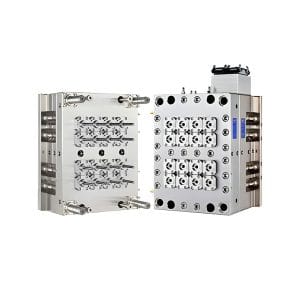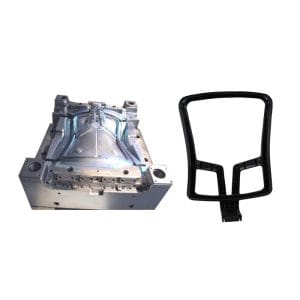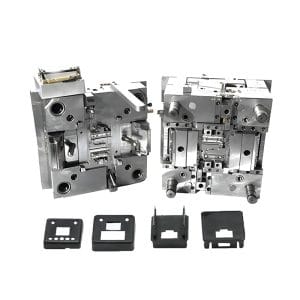What is Injection Molding
Injection molding is a process used to create objects from plastic materials. The process works by injecting molten plastic into a mold, where it cools and solidifies into the desired shape. Injection molding is one of the most popular methods for manufacturing plastics, as it is fast, efficient, and versatile. Injection molding has been around since the late 1800s, but it wasn’t until the 1950s that the process became widely used. Today, injection molding is used to create a variety of objects, from medical supplies to toys.
The Injection Molding Process
Injection molding is a process that can be used to create many different parts and products. The process begins with melting down plastic pellets into a liquid form. This liquid is then injected into a mold where it cools and hardens into the desired shape. Injection molding is a versatile manufacturing method that can be used to create products of all shapes and sizes.
The first step in the injection molding process is to melt down the plastic pellets into a liquid form. This is typically done using a large barrel and screw system. The barrel heats up the plastic pellets until they reach their melting point and become a liquid. The melted plastic is then injected into the mold under high pressure.
Once the plastic has been injected into the mold, it begins to cool and harden. The cooling process can be accelerated by using water or air-cooled molds. Once the plastic has hardened, the mold is opened and the part is ejected. Injection-molded parts are typically very precise and have a high level of detail.
Injection molding is a versatile manufacturing method that can be used to create parts with complex geometries. It is also well suited for mass production, as large numbers of identical parts can be produced quickly and efficiently.

Materials Used in Injection Molding
Injection molding is a manufacturing process for producing parts by injecting molten material into a mold. Injection molding can be performed with a wide variety of materials, including metals, glasses, and elastomers.
The material for the part is fed into a hopper and then heated to the melting point by the barrel heater. The molten material is then injected under high pressure into the mold cavity. As the material cools, it takes on the shape of the cavity and solidifies.
The injection molding process is very versatile and can be used to produce parts with complex geometries. In addition, multiple colors and materials can be molded together to create composite parts.
Advantages of Injection Molding

Injection molding is a popular manufacturing process for producing parts and components for a wide variety of products and industries. There are many advantages to using injection molding, including:
-It is a versatile process that can be used to create parts of various sizes, shapes, and complexity.
-Injection molding is capable of producing high-quality parts with tight tolerances.
-The process is relatively fast and efficient, especially when compared to traditional manufacturing processes such as machining or casting.
-Injection molding can be automated to greatly improve productivity and efficiency.
Overall, injection molding is an excellent choice for those looking for a versatile, efficient, and high-quality manufacturing process.
Disadvantages of Injection Molding
Disadvantages of injection molding can include its high initial costs, limitations to shape and size, and longer production times compared to other methods such as die casting. Additionally, injection molding is not well suited for producing large quantities of a product, making it more appropriate for prototyping or low-volume production runs.
Applications of Injection Molding
Injection molding is a popular manufacturing process used to produce parts and components for a wide variety of products and applications. The process involves injecting molten material into a mold cavity, where it cools and hardens to the desired shape.
Injection molding is often used to create plastic or metal parts with intricate designs, such as those found in electronic devices, automotive components, medical devices, and more. The process is also well-suited for mass production, as multiple copies of the same part can be produced quickly and efficiently.
There are many different materials that can be injection molded, including metals (steel, aluminum, brass), thermosetting plastics (phenolic, epoxy), thermoplastic elastomers (TPE), and more. In addition, injection molding can be used to create composite materials with multiple different types of reinforcement (fibers, particles).
Injection molding is an extremely versatile manufacturing process with numerous applications in various industries. Some common examples include:
-Automotive: Dashboards, door panels, engine covers
-Consumer electronics: Cell phone housings, computer keyboards
-Medical: Syringes, blood pressure cuffs
Injection molding in the future
Injection molding is a manufacturing process for producing parts by injecting molten material into a mold. In the future, injection molding will continue to be an important manufacturing process for many industries. Technology is constantly evolving, and new advances in materials and processes are making it possible to produce ever more complex parts with greater precision and accuracy. In addition, the development of new types of injection machines is providing manufacturers with more flexibility and capability than ever before. As technology continues to evolve, we can expect to see even more amazing things from injection molding in the future.
Conclusion
Injection molding is a manufacturing process that involves injecting molten material into a mold cavity. This can be done with various materials, including metals, plastics, and ceramics. Injection molding is a versatile method of production and can be used to create parts of various sizes and shapes. The benefits of injection molding include its speed, accuracy, and scalability.



